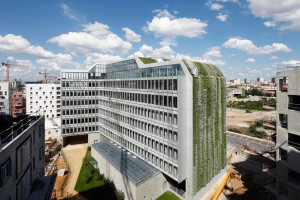by CBS News, September 19, 2013
A plan to install solar panels on the rooftops of Toronto schools will get underway this fall, as crews begin repairs on 32 buildings across the city.
The Toronto District School Board is working in partnership with energy firm Potentia Solar Inc. to install solar panels on 311 school rooftops over the next three years.
Once installed, the panels will generate enough energy to power 4,500 homes each year. Revenue generated from the project will be used to fund much-needed repairs and replacement on school rooftops across the city.
“We’re very proud that our students will be part of the conversation in terms of environmental education, part of the conversation to see how the roofs will be impacted,” said Donna Quan, director of education at the TDSB.
The plan was first announced in 2011. Most of the project costs will come from private solar energy companies with some provincial funding.
It’s one of the largest capital projects of any school board in North America, and the largest in Canada.
